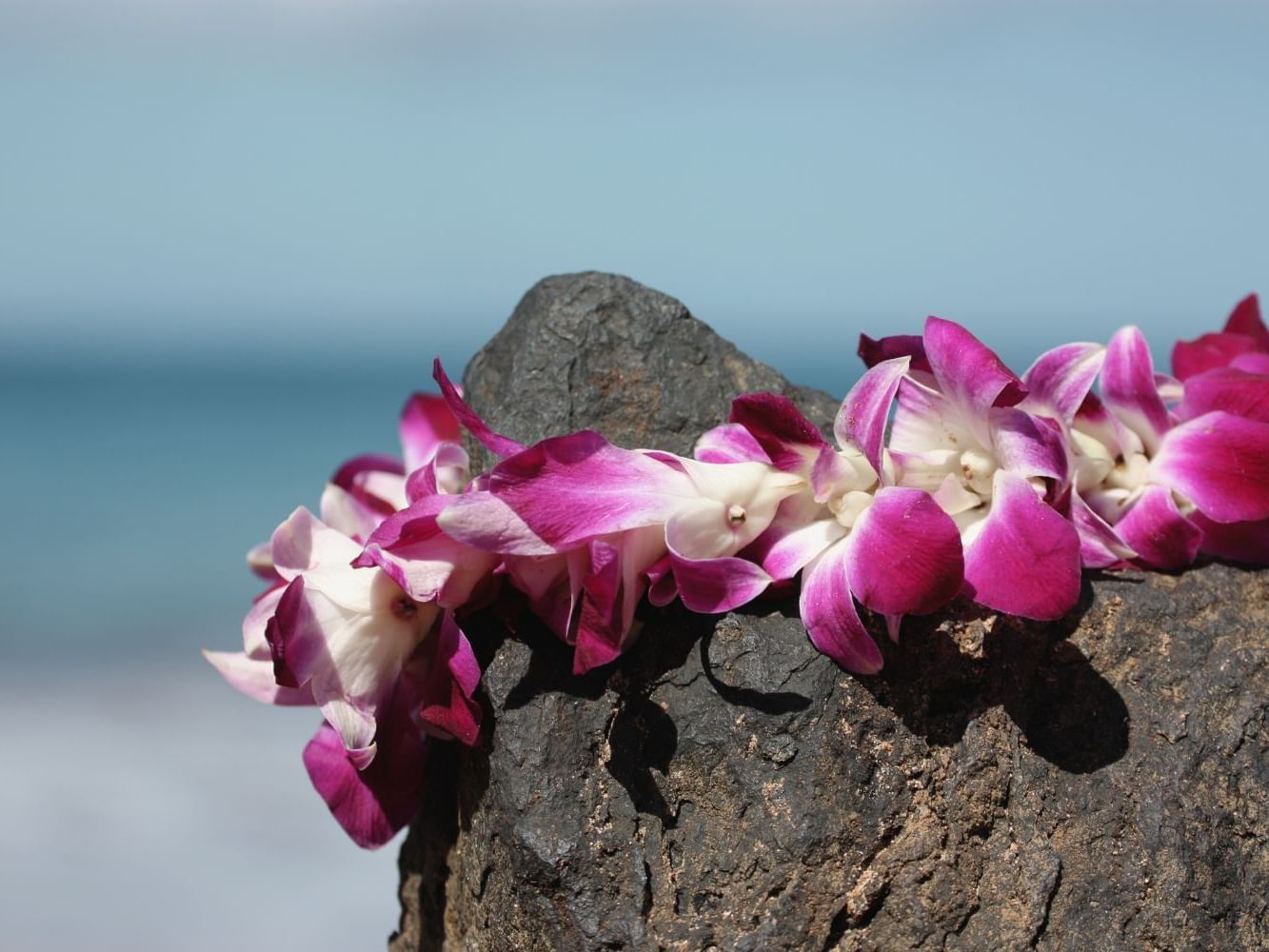Exploring the Art and Tradition of the Hawaiian Lei
As you're welcomed on Hawaiian shores, you'll be embraced by the warm and genuine Aloha spirit. It won't take long to realize that Hawaii’s people embody charm, warmth, and sincerity. One such gesture to show this connection is gifting a lei, a garland made of various materials such as leaves, flowers, or shells.
As a beautiful and fragrant lei is slung around your shoulders, or before you join one of our lei-making classes, take a moment to consider the art and tradition of the flower garland. There is more to it than carefully woven materials and floral adornments...
The Roots and Beauty of the Hawaiian Lei Tradition
The lei can be traced back to the Polynesians and Asians, who traveled to the Hawaiian Islands, bringing their tradition of making and wearing lei. The lei tradition holds such value in Hawaii that it's commemorated with a festive Lei Day holiday on May 1st every year, since 1928.
Let's learn the unique history and symbolism behind Hawaiian flower garlands.
Symbolism
Initially, these garlands were used to distinguish between social classes and worn by chiefs as a status symbol of their connection to the gods. On many occasions, competing tribes exchanged lei to signify peaceful agreements.
The spirit of Aloha is one of humility, friendship, unity with one another and nature, connection, kindness, and recognition of life. It's a complex and beautiful way of being. In our times, the lei symbolizes this spirit, one greatly embodied by the Hawaiian people.
Wearing a Lei - With Gratitude and the Aloha Spirit
Lei is often given, worn, and received on joyous occasions, from graduations to births, weddings, office parties, and just about any celebration. As a visitor to Hawaii, you may wish to wear your lei when you go dancing or to a hidden breakfast gem. Whatever the occasion, if it's worn with gratitude to the giver, an appreciation for the art, and a deep respect for Hawaiian culture, your lei is an acceptable addition. And it may encourage you to embody that Aloha attitude!
In contrast to joyful occasions, the lei can also be worn to funerals and more somber events. It can be used to show respect, affection, and community. More importantly, it recognizes the circle of life and can be given to family members to show condolences and love.
Flower Meanings
A notable difference between leis crafted for funerals and those designed for celebrations lies in the choice of flowers used, each imbued with its own symbolic meaning.
- Plumeria flowers - Good luck
- Orchids - Wealth and prosperity
- Ti leaves - Strength and tenacity
- Maile flowers - Peace or honor and respect
- Pikake flowers - love
Certainly, the meaning behind a lei can vary, so if you're not sure if your lei fits the occasion or if you're curious about its significance, feel free to ask someone local or the person who gave it to you. They'll be happy to share the story or meaning behind it.
Never Refuse a Lei!
When created, it is believed that the weaver's spirit, with their unique personality and creativity, is woven along with the fragrant and natural materials. As such, if you're given a lei, always, always accept it with a beaming grin, a kiss on the cheek, and the same enthusiasm as if you were being invited into their ohana (family).
When it comes time to remove your lei, returning it to nature is customary. You can do this by hanging it on a branch or dropping it into the waves. But never do this when the giver is around.
The Art of Lei Making
Making lei is a wonderful opportunity to learn about the symbolism of various materials, and to connect with other travelers to the island. Remember that the aloha spirit includes a love for togetherness and unity. Gift your lei to someone you wish to show aloha kindness to or wear it to show gratitude and love for yourself.
The Waikiki Resort Hotel's lei-making classes provide a unique opportunity to explore this beautiful art form, inviting you to weave not just flowers, but memories that will last a lifetime.

